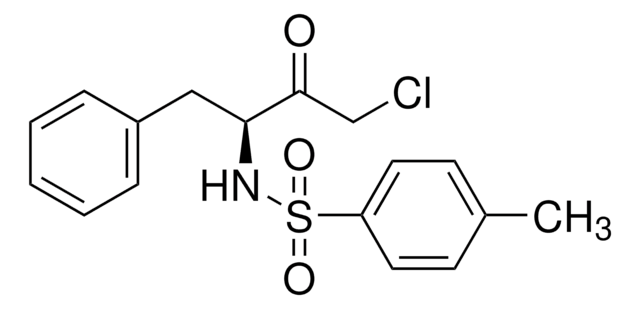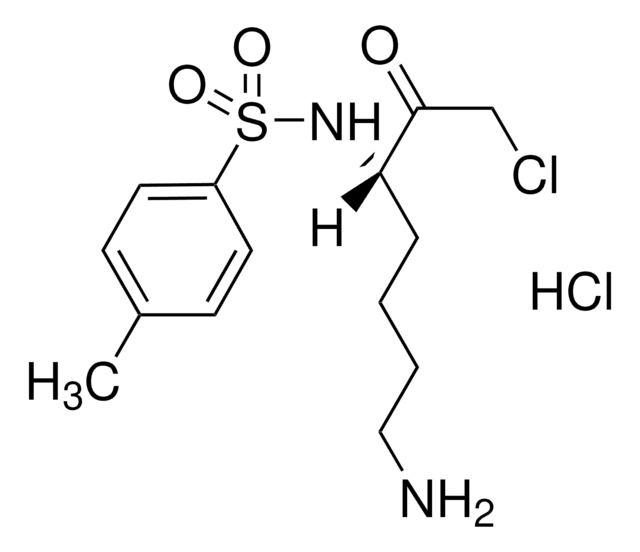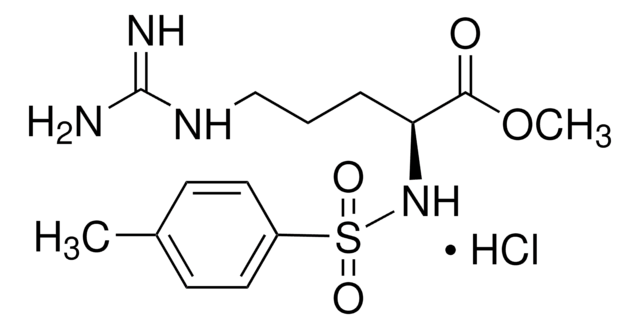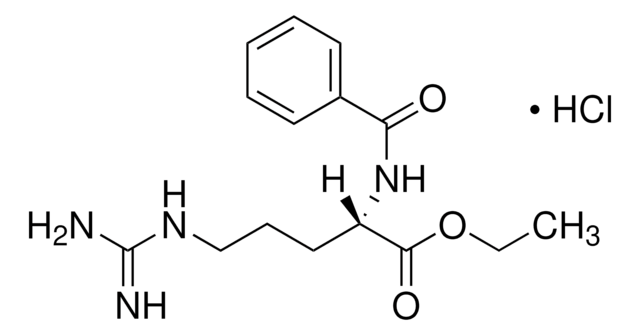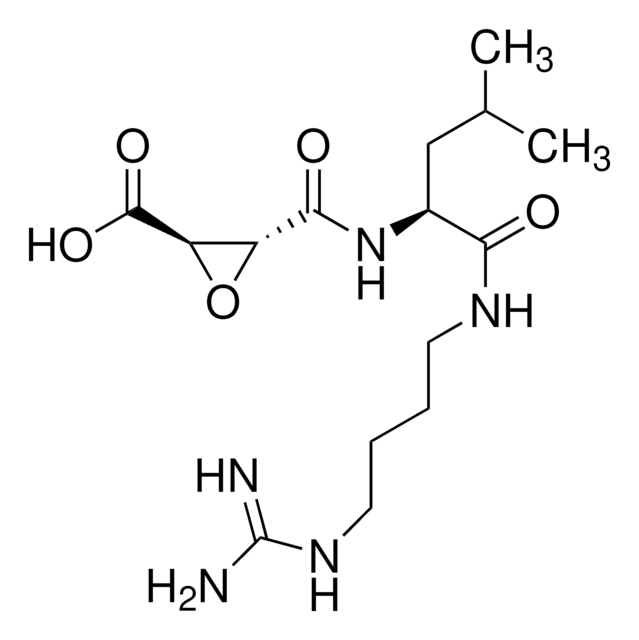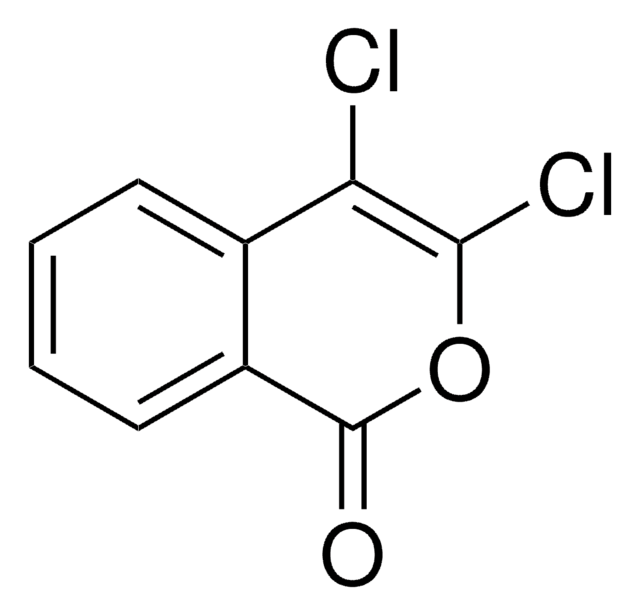T7254
Nα-Tosyl-L-lysine chloromethyl ketone hydrochloride
powder, ≥96% (TLC)
Synonym(s):
(3S)-1-Chloro-3-tosylamido-7-amino-2-heptanone hydrochloride, (3S)-7-Amino-1-chloro-3-tosylamino-2-heptanone hydrochloride, TLCK, Tosyl-L-lysyl-chloromethane hydrochloride
About This Item
Recommended Products
product name
Nα-Tosyl-L-lysine chloromethyl ketone hydrochloride, ≥96% (TLC), powder
biological source
synthetic (organic)
Quality Level
Assay
≥96% (TLC)
form
powder
potency
10-100 μM effective concentration
solubility
H2O: 50 mg/mL
storage temp.
−20°C
SMILES string
Cl[H].Cc1ccc(cc1)S(=O)(=O)N[C@@H](CCCCN)C(=O)CCl
InChI
1S/C14H21ClN2O3S.ClH/c1-11-5-7-12(8-6-11)21(19,20)17-13(14(18)10-15)4-2-3-9-16;/h5-8,13,17H,2-4,9-10,16H2,1H3;1H/t13-;/m0./s1
InChI key
YFCUZWYIPBUQBD-ZOWNYOTGSA-N
Gene Information
human ... NFKB1(4790) , NFKB2(4791)
Looking for similar products? Visit Product Comparison Guide
Application
- in chymotrypsin purification to prevent binding of trypsins to the affinity support by inhibiting them in the crude extract
- as a protease inhibitor in tissue and cell homogenization
- as a trypsin inhibitor to determine the specific protease activity levels
Biochem/physiol Actions
Packaging
Caution
Storage Class Code
11 - Combustible Solids
WGK
WGK 3
Flash Point(F)
Not applicable
Flash Point(C)
Not applicable
Personal Protective Equipment
Certificates of Analysis (COA)
Search for Certificates of Analysis (COA) by entering the products Lot/Batch Number. Lot and Batch Numbers can be found on a product’s label following the words ‘Lot’ or ‘Batch’.
Already Own This Product?
Find documentation for the products that you have recently purchased in the Document Library.
Customers Also Viewed
Protocols
Thrombin is an endolytic serine protease that selectively cleaves the Arg–Gly bonds of fibrinogen to form fibrin and release fibrinopeptides A and B.
Related Content
Trypsin is an enzyme in the serine protease class that consists of a polypeptide chain of 223 amino acid residues. Multiple sources, grades and formulations of trypsin specifically designed for research applications are available.
Our team of scientists has experience in all areas of research including Life Science, Material Science, Chemical Synthesis, Chromatography, Analytical and many others.
Contact Technical Service